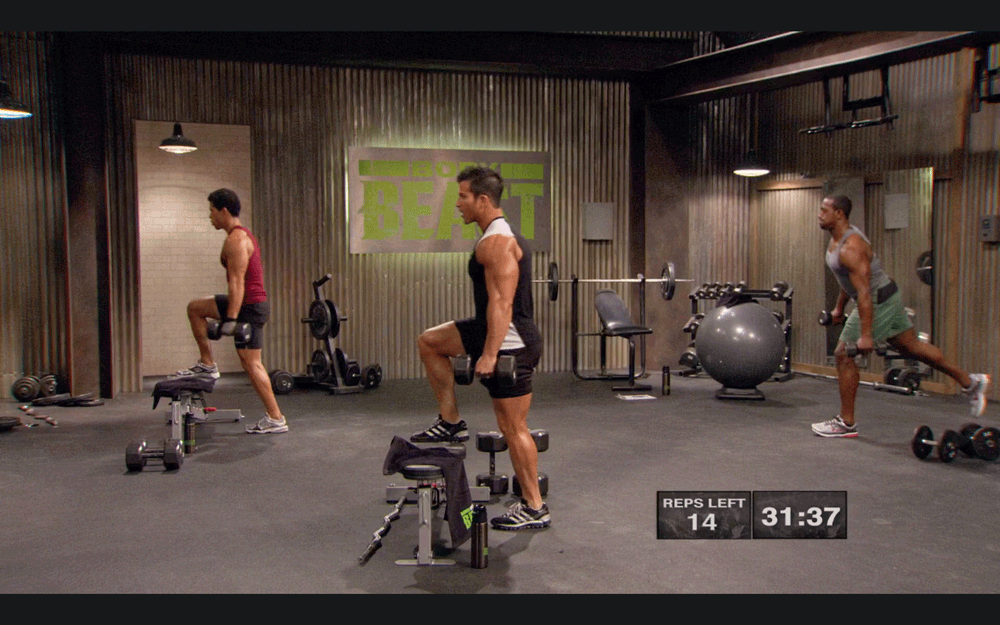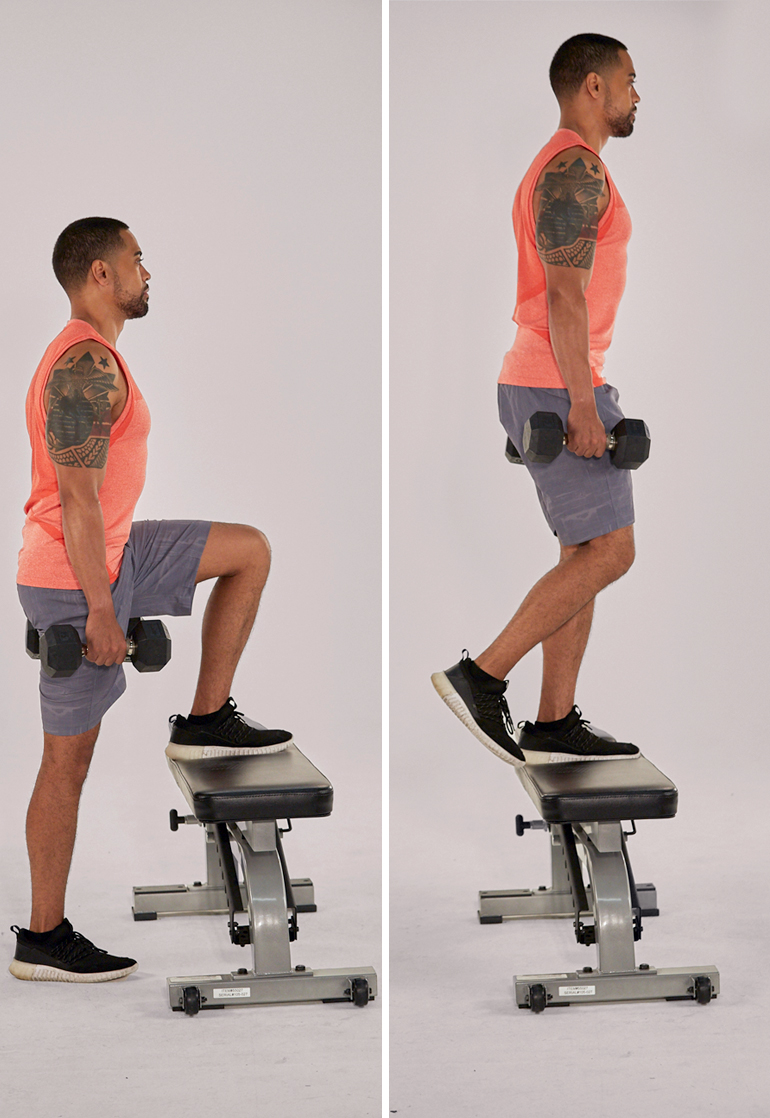How to Do the Step-Up

With all of the attention paid to the squat, the step-up often gets overlooked. Indeed, many people simply consider the step-up an “alternative” to that king of lower body strength exercises — something you do only when when you need to switch things up.
That’s unfortunate, considering the weighted step-up is such a powerful total-body muscle builder.
You read that right — we’re not just talking about your legs here. Sure, you’ll nail your quads and glutes, and you might even feel a touch of soreness in your calves and hamstrings the next day.
But the secret to the step-up’s effectiveness comes from the fact that it’s a unilateral exercise, meaning that it trains one leg at a time. Not only will that help iron out muscle and strength imbalances between your legs, but the instability it introduces will also boost muscle recruitment throughout your body as it works to find balance.
The more muscle you work, the more you build. Follow these tips to maximize your results.
Dumbbell Step-Up: Step-by-Step Instructions

Muscles targeted: Primarily your quadriceps and glutes, but also your hamstrings, calves, and core.
- Stand tall holding a pair of dumbbells at arm’s length by your sides, and place your right foot on a bench so that your hip, knee, and ankle are all bent 90 degrees.
- Keeping your chest up and shoulders back, push your body up with your right leg until it’s straight (keep your left foot elevated).
- Pause, and then lower your body back to the starting position under control. Perform equal reps on both legs.
How to Make the Step-Up Easier
Ditch the dumbbells and perform the move using only your bodyweight, or swap the bench for a box or an aerobic step.
The lighter the load and the lower the step, the easier the exercise will be.
How to Make the Step-Up Harder
Swap two dumbbells for a single heavier one, and hold it in the hand opposite to the leg doing the work.
If you’re stepping up with your left leg, hold the weight in your right hand, for example.
Want even more of a challenge? Raise the knee of your “non working” leg (e.g., your right leg if you’re stepping up with your left one) above hip-level at the top of the move.
Bonus Tip

Make sure your working leg is indeed doing all of the work. If you’re stepping up with your left leg, don’t push off the ground with your right one.
And when you lower your left foot back to the ground, do it under control.
In short, fight gravity, don’t give in to it.
Take what you’ve learned here and apply it. For a variation on this move, check out The Master’s Hammer and Chisel. Want more basic moves? Click here.
